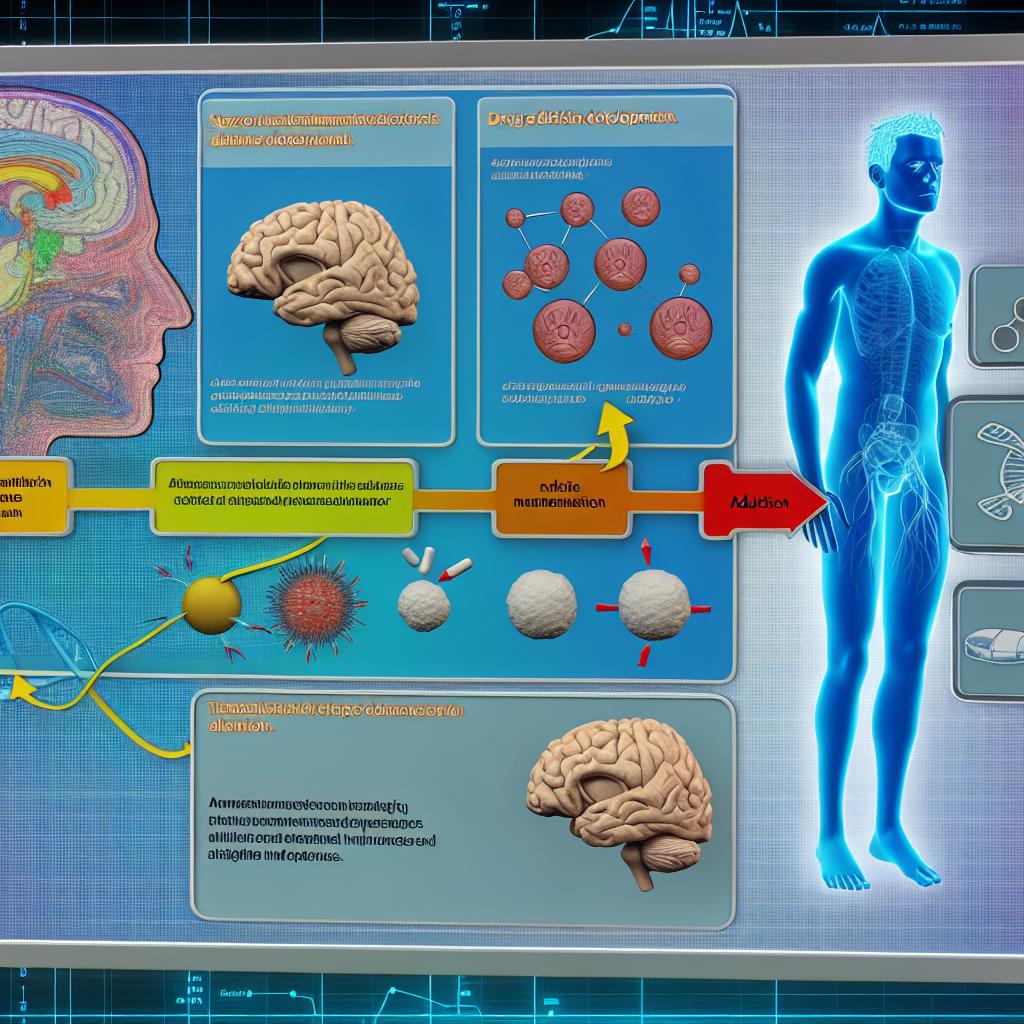Understanding Drug Addiction
Drug addiction is a chronic disease characterized by the compulsive use of drugs, despite the harmful consequences on the individual’s health and life. It involves complex interactions between brain chemistry, a person’s genetics, and environmental factors. Understanding the development of drug addiction involves examining how these various elements interplay to affect human behavior.
The Role of Brain Chemistry
The brain is the central organ affected by addictive substances. Many drugs influence the brain’s reward system, which reinforces behaviors essential for survival, such as eating and reproduction. When someone uses a drug, it can cause an excessive release of neurotransmitters such as dopamine, leading to feelings of euphoria. The brain remembers this experience, driving the individual to repeat the behavior.
Dopamine’s Importance in Addiction
Dopamine is a neurotransmitter crucial for motivation and pleasure. Drugs like cocaine and methamphetamine increase dopamine levels, creating a powerful reinforcement of the drug-taking behavior. Over time, the brain adjusts to these surges by reducing its own dopamine production or by reducing the number of dopamine receptors. This creates a need for more substantial amounts to achieve the same effect, known as tolerance.
Genetic Factors in Drug Addiction
Genetics play a significant role in the susceptibility to addiction. Research has identified numerous genes that may contribute to the risk of developing drug addiction. These genes might affect the way an individual’s brain processes drugs or influence personality traits such as impulsivity and risk-taking. For more information, you can explore articles about genetic influences on addiction at Genetic Literacy Project.
The Epigenetic Influence
Moreover, drug addiction can influence gene expression through epigenetic changes. These changes do not alter the DNA sequence but affect how genes are turned on or off. Chronic drug use can lead to epigenetic modifications that perpetuate addictive behaviors, making recovery challenging.
Environmental and Social Factors
Beyond biology, environmental factors are potent contributors to addiction. Social settings, peer pressure, trauma, and stress are influential elements that can lead to substance use and potentially addiction.
The Impact of Social Environment
Individuals who grow up in environments where drug use is prevalent may be more likely to experiment with drugs themselves. Additionally, stressful life circumstances, such as poverty and lack of social support, can increase vulnerability to addiction.
The Development of Addiction
Addiction typically progresses through various stages, from initial use to potential dependency. Initially, experimentation or recreational use happens, often driven by curiosity or social motivations. Over time, substance use can escalate as the individual seeks to recreate previous pleasurable experiences or cope with stress.
From Abuse to Dependency
When individuals transition from abuse to dependence, they start experiencing withdrawal symptoms when not using the substance. At this stage, normal functioning becomes increasingly dependent on the drug, and the cycle of addiction takes hold.
Treatment and Recovery
Understanding the scientific basis of addiction underpins effective treatment approaches. Successful recovery often requires a combination of medication, therapy, and lifestyle changes. Cognitive-behavioral therapy (CBT), for example, is useful for altering the thought patterns that lead to substance misuse.
For those interested in exploring treatment options, visit SAMHSA for resources and support systems available.
By delving into the science behind addiction, we can better understand its complexities and the diverse strategies needed for treatment and recovery. The interplay of genetic, environmental, and social factors highlights the multifaceted nature of addiction and the importance of a comprehensive approach to treatment.
Long-Term Effects of Drug Addiction
Persistent drug addiction can lead to a range of long-term health effects. These include physical health problems like cardiovascular disease, respiratory issues, and liver damage, as well as mental health disorders such as depression and anxiety. Chronic drug use changes the brain’s structure and function, which can result in enduring cognitive impairments and behavioral problems.
In addition to personal health, drug addiction often impacts social and familial relationships. Addicts might experience broken relationships, job loss, and legal problems. The societal burden of addiction, including healthcare costs and loss of productivity, underscores the need for effective preventative measures and treatment.
Preventive Strategies
Prevention strategies are essential in reducing the prevalence of drug addiction. Education programs in schools and communities that highlight the risks and consequences of drug use can be effective deterrents. Family-based prevention programs aim to improve family dynamics and parenting practices, which can subsequently lower the risk of children developing addictive behaviors.
Moreover, community initiatives that provide healthy alternatives for stress relief and recreational activities can mitigate some environmental risk factors associated with addiction. By fostering environments that support healthy behaviors and resilience in individuals, we potentially reduce the rate of drug addiction in the population.
Research and Innovation in Addiction Science
The field of addiction science is continually evolving. Researchers are exploring various innovative approaches to understanding and treating addiction. This includes investigating new medications and therapies that target the brain pathways involved in addictive behaviors.
Technological advancements such as brain imaging are enhancing our understanding of how addiction affects neurological processes. By visualizing changes in the brain due to drug use, scientists can better assess the impact of potential treatments on brain recovery.
The Challenges of Addiction Recovery
Recovery from addiction is a long-term process that involves more than just cessation of drug use. It often demands a comprehensive approach that incorporates physical, emotional, and psychological healing. Relapse is a common part of the recovery journey, not a sign of failure. Managing addiction over a lifetime involves addressing any underlying mental health issues, maintaining a supportive social network, and building coping mechanisms to handle life’s challenges without reverting to substance use.
Support groups and continuous therapy can provide the necessary frameworks for people in recovery, helping them sustain long-term sobriety. Additionally, personalized treatment plans that consider the individual’s unique circumstances, including their genetic and environmental backgrounds, can improve recovery outcomes.
In conclusion, drug addiction is a complex interplay of biological, psychological, and social factors. Understanding these dynamics is crucial in developing effective preventive strategies and treatment plans. While the journey of recovery can be challenging, a comprehensive approach that includes education, therapy, and support systems offers the best chance for individuals to lead healthy and fulfilling lives post-addiction.





